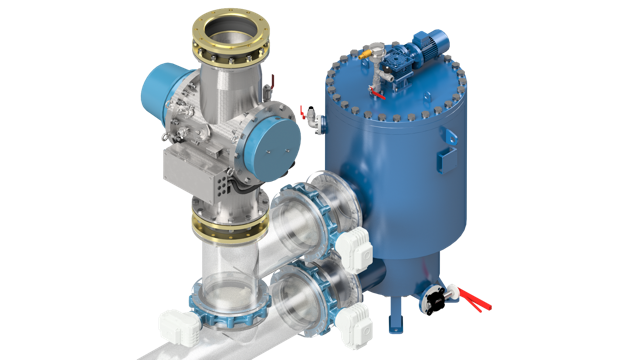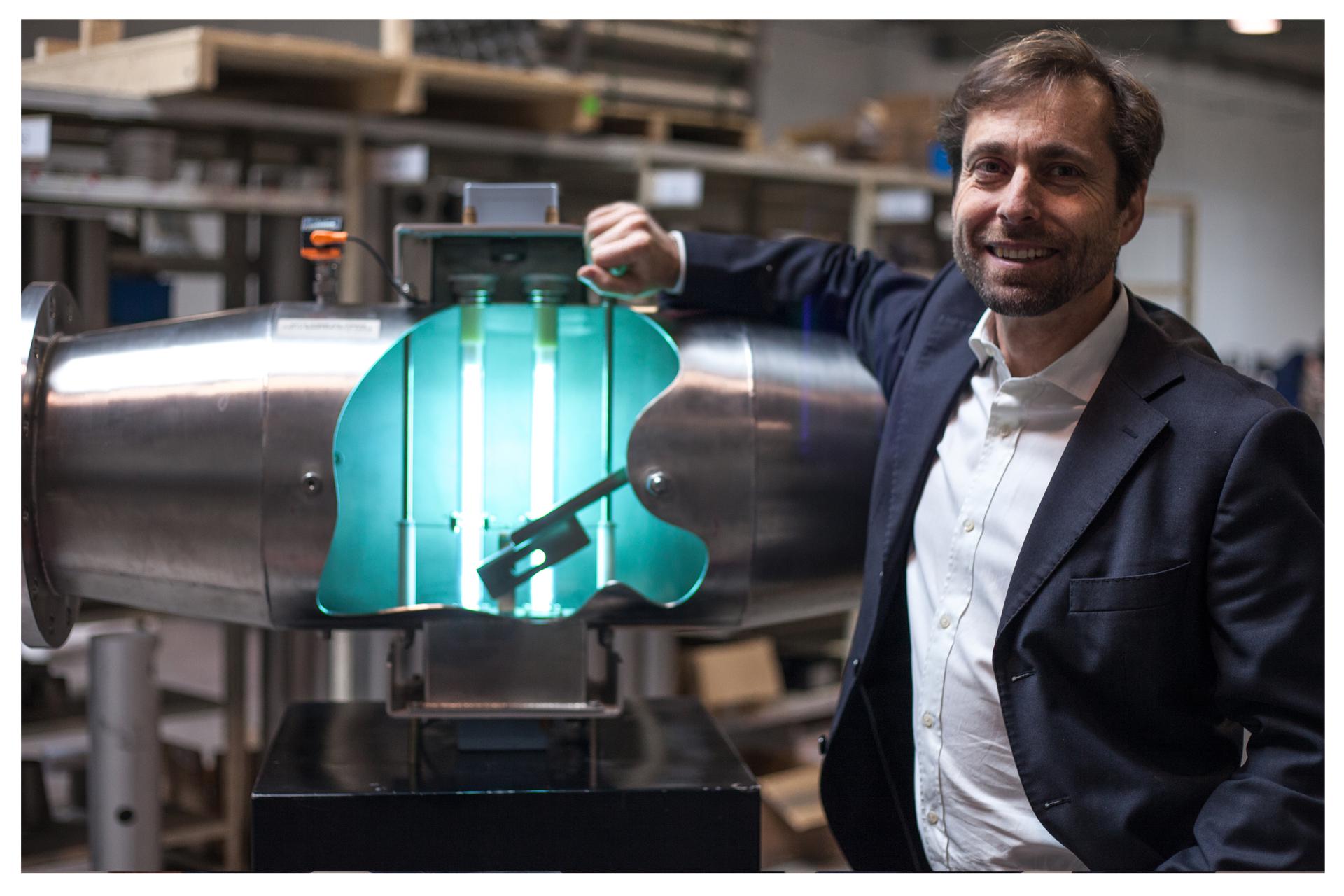The second in a series of three Ballast Water Forums being hosted by the UK Chamber of Shipping in partnership with Fathom Maritime Intelligence took place last week (June 30, 2016) with much debate and discussion around ballast water management occurring amongst expert speakers and delegates.
As it stands today the Ballast Water Management Convention is ratified by 51 Member States, representing 34.87% of the world shipping tonnage required for the Convention to enter into force.
Opening the forum was David Balston, the UK Chamber of Shipping’s Director of Policy and Director of Safety And Environment. He spoke of his commitment to environmentally sound shipping and although welcomed the Convention’s implementation, he questioned its arrival time, stating that when finally ratified it may be 50 years too late. From now on we need a pragmatic approach, he stated on behalf of the Chamber, where “common sense should prevail”.
The keynote was delivered by Senior Environmental Policy Leader at the UK Maritime and Coastguard Agency, Leanne Page. She supported Balston’s comments and stated that a pragmatic approach is the way forward for the UK. Page focussed largely on the importance of ensuring that the Convention is met and that decoupling the IOPP Certificate from the Harmonised System of Survey and Certification (HSSC) is not supported by the UK. If ship owners choose to do this then the UK will look to realign its surveys at the next renewal date, resulting in a number of surveys therefore needing to be undertaken in order to get the harmonisation that the HSSC offers.
The first panel saw three classification societies at the podium to speak about the approval process and installation of BWTS. Stamatis Fradelos, Principal Engineer, ABS drew upon the importance of correctly scaling land tests to ships, raising the concern that when doing so some problems have been found by ship owners such as sensor failures, pipe leaks, software issues and operational issues, and stated that systems with lower treatment capacities, less than 1,000m3/h have experienced fewer problems than those with capacities higher than 1,500m3/h. Mr Fradelos also spoke of the installation of BWTS. Problems such as dangerous gas generation, additional tanker requirements and ventilation were discussed.
Sahan Abeysekara, Senior Specialist, Engineering Systems, Lloyd’s Register, also gave an overview of system approvals and the rules, in particular the safety rules that must be complied with in order to achieve class approval by Lloyd’s Register. For instance, safely integrating BWTS with other equipment, considering the effects the system may have on other shipboard systems, stability, piping and cable routing, electrical installations in hazardous areas and safe storage and handling of chemicals were topics touched upon. In particular, feedback from retrofits is important and considering the impact of the system on the ship and its ballast system is crucial.
Mr Abeysekara urged ship owners and operators to ensure that themselves and their crew fully understand the Convention and its requirements, that the crew understand how to handle the ballast water and its treatment system, that procedures are managed correctly, that the record book is kept up-to-date and that monitoring is carried out stringently in order to mitigate the potential problems, ensure compliance and reduce the potential for penalisation.
Naufal Ashraff, Business Development Manager of DNV GL, stated that it takes approximately 2-3 weeks following receipt of documentation to obtain approval and urged ship owners to prepare accordingly. He talked about how retrofits are more complex than newbuild installations due to bypass of BWTS, gravity fillings and discharge and space. Furthermore, retrofits must take place in a short dry-dock period, while increased power requirements may necessitate additional generators and increased heat loss in piping systems may lead to lower ballasting rates.
The next panel welcomed Katie Weaver of Echochlor Inc who ran through the different types of systems and their benefits, giving ship owners in the audience the chance to assess the options on the market today. She emphasised the importance of choosing a system based on the type of water to be treated and the volume, and commented on the less efficient use of chlorine and ozone at higher pH levels. Chlorine dioxide has however proven its ability to work well where organic organisms are found, although to a lesser degree than other biocides.
Putting ballast water sampling under the microscope was Tim Fileman, Business Manager, Plymouth Marine Laboratory, who helped ship owners and system manufacturers in the audience understand how ballast water samples are analysed for compliance with D1 (ballast water exchange) and D2 (discharge standard). Indicative analysis and detailed analysis methods and results were analysed, with the overall conclusion given that indicative analysis may provide more beneficial where quick results are needed as instantaneous feedback is provided, but that the skills needed to carry out detailed analysis provide much better analytical results. Fileman also emphasised the importance of understanding that biology is not homogenous and therefore ascertaining distinct variations is key though sampling.
The challenges of installing BWTS was full of discussion throughout the day. Sidharth Kulbhaskar, Ship Repair and Maintenance Manager, Shell Shipping Maritime, took to the floor to discuss the considerations when choosing a system and the importance of understanding the status of guarantees, reputation, marine experts, services and financial status of the company. He also addressed the challenges that lie ahead for shipyards in retrofitting the quantity of systems ahead of implementation, stating that an average of 17.6 retrofits per day would be needed in order to meet the Convention’s requirements.
Paul Squibb, Superintendent, Absolute Shipping, spoke of the many challenges that short sea shippers face. Not only do they find it challenging to find a suitable system that fits the footprint and power constraints of their ships, but also the fact that they have to comply when they are operating within one region and therefore are not transferring species globally as other sectors do. Furthermore, in order to meet the Convention, they may have to start installing additional generators to their ships to provide the power for the BWTS, which will not only increase their costs but also their greenhouse gas (GHG) emissions.
In addition to all of this, the port reception facilities at this time are inadequate for short sea shippers and if this and the availability of small, low power BWTS do not become available then the demise of the short sea sector is a very real possibility.
The manager of projects and engineering for Damen Green Solutions followed on with his presentation on ballast water treatment systems (BWTS), emphasising the importance of the preparatory stage for ship owners when choosing a BWTS that is right for them and reiterating what had previously been said throughout the day, stating that “preparation is everything”.
Following on from this successful and topical forum, Fathom Maritime Intelligence and the UK Chamber of Shipping will host the third forum later this year.
Ship Efficiency Review News
To contact the reporter responsible for this article, please email editor@fathom-mi.com

































